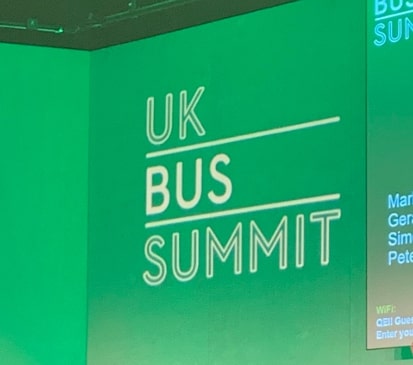
In this issue:
- 2020 in Review
- The Road Ahead…
- Cambridgeshire Autonomous Metro (CAM)
We hope you're all having a healthy and happy start to the new year!
For all of us, 2020 was a year like no other. Everywhere in the world, the transport sector was turned upside-down, as agencies scrambled to replan their services amid severe disruptions to ridership and workforces. Here at Podaris, our goal has always been to facilitate more agile and effective transport planning via our remote collaboration platform – just what the industry needs, we’d like to think, in this time of crisis. The challenge for us has been to meet that need as effectively as possible. I think we’ve done so, and in coming months we’ll be able to bring you case studies of how Podaris has helped its customers to weather this storm.
Will 2021 be the year that everything goes back to normal? Does “normal” even exist anymore? Or has the pandemic set some things irrevocably in motion? Personally, I believe that many of the shifts in how we work and live can't be easily rewound, and will have long-term effects on how our cities and transport networks are designed, far into the future. Rapidly-changing attitudes towards public space and public transport will continue to be a challenge (and an opportunity) for many years to come.
And Podaris will be there to help, ensuring that all disciplines and stakeholders can work together, however dynamic and uncertain the times may be.

2020 in review
Like most, for Podaris, 2020 started off hopeful. We began the year by launching significant updates for planning scheduled services and street-based bus routes at the UK Bus Summit. However, the UK Bus Summit became notorious as the event where the country's first case of COVID-19 was confirmed, and in turn, foreshadowing the unprecedented challenges bus and transport planners were about to have…
Throughout the year we have worked quickly to expand and add capabilities to support planners responding to the pandemic in different ways. Our customers have been using Podaris to remotely and collaboratively plan a range of scenarios including, street space reallocations, rapid bus network redesigns, and even simulating new travel behaviours to help forecast the viability of major transport projects. Here are some of the highlights of what we developed:
-
Advanced isochrones: we extended the basic crow-flies travel time isochrones you had always been able to create in many powerful ways. The tool can now generate street-based walking and cycling isochrones. These analyse accessibility from/to one or more locations and easily generate catchment isochrones of networks, stations, and cycling schemes.
-
Scheduled services: Podaris has always supported planning rail- and guideway-based transport infrastructure, and with scheduled services, planners can create, analyse, and optimise service routes, timetables, service levels, fleet sizes, and more. Ideally suited for optioneering and feasibility studies, this allows you to iterate through multiple “what-if” scenarios rapidly without being a scheduler or operator.
-
Street-based bus route planning: For planning road-based systems, like a bus route, we added advanced new street following capabilities. Simply select the desired points along the route, and Podaris will snap to existing roads, finding the most optimal path and calculating the runtime based on historical traffic speeds.
-
Datasets and GIS-Style queries: A challenge the pandemic presented is the need to use better, more recent data within transport planning activities. We responded by adding support of organisation-level datasets to Podaris. These can be reused throughout the platform to support almost any kind of demographic or spatial analysis through flexible GIS-Style queries.
-
Scheduled service cost modelling: a sadly common task during 2020 was the impossible problem of needing to redesign routes and networks to reduce operating costs while maintaining service levels. We added flexible and dynamic high-level cost modelling to Podaris. This feature allowed planners to instantly gain insight into the financial tradeoffs of service level changes.
Over the next few newsletters, we will be telling you about all of these features and how they helped customers throughout the past year. However, all of these features are available now through our Enterprise subscriptions. If you'd like to see them in action, feel free to reach out and book a one-on-one demo with us today.
While our Free, Solo, and Professional plans available at app.podaris.com are suitable for individual planners and their collaborators, our Enterprise platform is built for the needs of organisations. Enterprise customers range from consultancies and transport technology vendors to some of the world's largest corporations, planning their campus developments and transport strategies for their employees.
The Road Ahead
2020 arguably saw more transport planning take place than the past ten years combined, and the resilience and agility planners have demonstrated has been truly outstanding. We are grateful for the overwhelming support, trust (and feature requests) our customers have placed in us to help them respond. Our updates throughout 2020 saw Podaris mature into a powerful toolkit to plan and understand the impact of multi-modal transport networks.
2021 will remain a challenging year for those involved in transportation, but will hopefully be more promising than 2020. The pandemic has undoubtedly changed travel behaviours and created new transport planning needs, and our mission for 2021 is to continue to add capabilities to support agile remote collaborative transport planning. Here is a sneak peek at some of the ways we plan to do so:
-
Enhancements to Podaris:Engage: Podaris:Engage is our integrated environment for showcasing scenarios and collating feedback. Engage is a presentational window into a project's transport infrastructure, isochrones and datasets. We'll soon be demonstrating some new features that will enable you to engage stakeholders more collaboratively.
-
Street network editing: to be a genuinely multi-modal planning environment, it must be possible to modify the street network whilst planning transport infrastructure. This year we will be unveiling capabilities to make changes to the street network, such as adding roads and replace lanes with cycle paths. These changes will seamlessly integrate with transport infrastructure, for instance, impacting your bus route journey times when you add a dedicated bus lane.
-
Advanced revision histories: Podaris remains the only real-time collaborative transport planning platform. Our customers are continually pushing the envelope, trying to model ever-larger transport networks, and do more complex forms of simulation and analysis within Podaris. Collaboration at this scale would benefit from advanced fork/merge workflows for project management, allowing more data/scenario reuse throughout Podaris.
If you would like to learn more about these enhancements or have ideas of your own, please get in touch.
Cambridge Autonomous Metro

Our resolution for 2021 is to share more information about how our customers are using Podaris to accelerate and improve their transport planning activities. So to start the year off how we mean to go on, we're excited to announce our involvement in Cambridgeshire Autonomous Metro (CAM).
We join a consortium of leading-edge transport companies, led by global consultancy Mott MacDonald to assist in the development of innovative conceptual designs for Cambridge's proposed CAM scheme. You can read more about Cambridgeshire & Peterborough Combined Authority's vision for the scheme and Podaris’ involvement here.